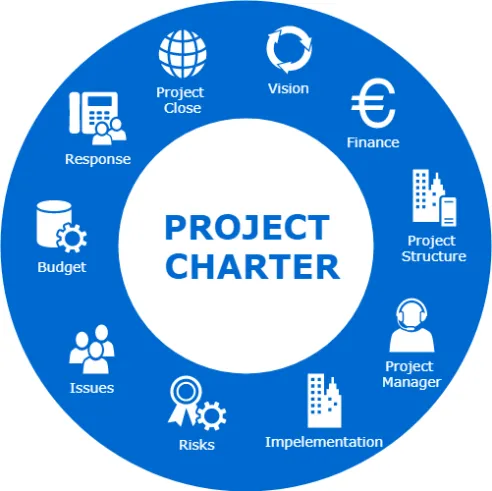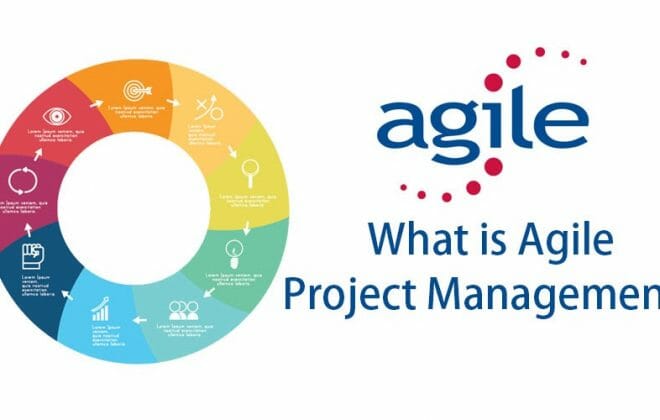How to Write a Winning Project Charter
Businesses, in the old days, could be run without defining or questioning some major aspects of a project undertaken.
However, today, any project that is taken up is closely looked into while clearly defining the scope, the objectives, and the direction in which the project would be proceeding.
That’s clearly a smarter way to approach things!
If you’re reading this today and are responsible for defining everything about a project for a business, you’ll get everything you need to know to be able to write a Winning Project Charter!
This guide will get you covered from the basics of a Project Charter to some mind-blowing tips that will help you successfully embed a project charter for a better project management process in action.
So, without further ado, let us get started.
What is a Project Charter?


In simpler and the most basic terms, if we have to define Project Charter, we would do it this way:
Project Charter is a comprehensive document that involves some important elements such as the scope of the project, its purpose, and the team management involved in the whole process.
However, the point that is often missed out and forgotten about a project charter is — It is an authorization permit for initiation of the project while defining the major details of the project.
What are the core elements of a Project Charter?
Any project is incomplete without its key elements that define the purpose of having it.
The Project Charter is a foundation for moving ahead with the proposed Project if it is accepted, thereby it can be divided into 2 phases: The Initiation Phase (Before the Acceptance) and The Planning Phase (After the Acceptance). The key elements thereby get added on, once the project is approved. On moving to phase 2, it gives a more holistic perspective of undertaking the project by laying out the foundation of the project development plan.
Some of the features of Project Charters in the Initiation Phase are as follows:
- The Scope of the Proposed Project
- The Major Objective of the Project
- The Criteria for Acceptance
Some of the elements that get added during the Planning Phase are:
- The Risk Involved
- The Budget Allocation to resources
- The Set Targets and Guidelines
- The Defined Roles and Tasks for the team members
- The Success Factors for Measuring Progress
These are just a few elements that are commonly noted in Project Charters. It focuses on answering each and every doubt one might have regarding the project.
Nobody likes confusion, right?
Say no to confusions and doubts because ‘Clarity’ is the major objective of preparing a PC.
Before we begin, let us understand the key benefits of preparing a PC.
What is the Importance of preparing a Winning Project Charter?
There are loads of people out there who believe this is an unnecessary course of action that does not fetch any result. If you are one of them, you really need to know how important a project charter is.
It is a critical part of the whole process as it lays out the foundation for the project’s overall success. Let us understand the importance that it holds:
1. It Adds Value to Your Project
A Project Charter ensures that the team working on the project knows the importance of it. It ensures that each member works hard enough to achieve the aspired mission that the project is aiming at.
If a team works without a Team Charter, the team only works towards completing the project.
However, a Team Charter in place ensures that the team not only aims to complete the project but understands the importance that it holds.
2. It Saves Up Crucial Time that would have later been wasted
A Project Charter is inclusive of taking care of different phases throughout the journey. It helps to divide the work to be done and thereby allocating the tasks within the team members according to their respective areas of specialization.
It also takes care of backup plans in case of failures and strategies to combat any hurdles in the way. Such planning helps to save up crucial time later while implementing the process. It helps the team to focus on areas that need attention then and helps in a smooth journey.
3. It Defines Roles and Gives Complete Clarity
A Project Charter clearly defines what each team is supposed to be working on and who is responsible for what. It sets clear targets and goals that the team envisions to achieve. Defining the tasks and roles beforehand helps in laying out an efficient plan that gives complete clarity to each and everyone involved.
Defining these roles is a crucial part as everything is thoroughly looked into and roles are assigned according to everyone’s specialization. This ensures that the process faces no bottlenecks while the project is worked upon.
4. It Instills Confidence and Boosts the Team’s Morale
A well-drafted project charter that is approved by the members is a confidence booster for the team as the team feels confident in the proposed structure. Not just that, it lifts the team’s morale because they believe that their manager knows the direction in which the project has to be led.
A well-written project charter is a foundation for the plan’s success. The more well thought and well planned it is, the better it is for the business. A great PC only motivates all the members to work towards achieving the goal!
Now that you very well know the importance of Writing a Winning Project Charter and how smoothly it can help your project to be implemented with ease, it is time that we introduce you to the ingredients of preparing a killer Project Charter.
Let us get started on the 7 magic ingredients for your next well thought out Project that your business is going to implement.
7 Steps to a Winning Project Charter
Before getting onto it, it is better that you know that there is no perfect rule of creating a Project Charter. However, there are ways you can create a Project Charter that is effective and helps your team be efficient.
1. Have a Brainstorming Session with your Team and Stakeholders before beginning
Who does not like to be heard?
Discussions are underrated and thereby not valued enough. However, a great brainstorming session with your team before planning the Project Charter gets everyone on board and makes everyone believe that their opinions are valued.
Such a discussion helps to build trust and bring out the best effective ways of doing the project. Not just that, a discussion encourages for an accelerated Strategic success with Cross-Functional Collaboration.
The team needs to trust their manager and a manager who values everyone’s opinion and is open to have a creative discussion is encouraged by his team. This boosts the team’s morale too and makes sure that everyone is on board and is willing to collaborate to fulfil a shared goal.
2. Focus on Documenting everything to Plan Better
No matter how many geniuses you have in your team, Documenting is an essential part of preparing a killer Project Charter. Documenting suggestions and taking notes would help in the future while drafting the final PC.
Not penning down important information oftentimes hinders project development.
Making notes helps in looking at alternative solutions for problems. Making notes also ensures that you do not miss out on any crucial points or information. It also ensures that the final plan is made taking everything into consideration.
3. Make Use of the Pool Of Templates Available Online
Focus on being a smart worker rather than being a hard worker. The internet is flooded with a lot of templates available for your projects.
All you need to do is – Assess your needs, analyze what you want to include in your PC as per your project requirements, and choose the best template that serves your needs. Templates save up a lot of time and give you more time to focus on developing a more strategic process for your project.
4. Assess the Business’ Scope and Risk Involved
A great manager is the one who not only highlights the positives of the project but also goes by limiting the project by emphasizing on the business’ risks involved in the whole process.
Make sure that your project is minimized by all kinds of risks involved.
Come up with a backup plan if things don’t go as planned or if some new threat comes into play. Go on and review the plan a couple of times before you submit it for approval and be sure to include hurdles that might hinder the project development process and give suggestions to manage those risks.
5. Be as precise as you can be
The Stakeholders always have a lot of doubts and questions in mind regarding the project. The way to take them into confidence is by answering all of their questions in your Project Charter.
Go the extra mile and be as precise as you can be. Do not just go by taking their doubts by one simple answer but give the reasoning behind and give them numbers to analyze and justify. Make sure to cover all the project management phases.
Some of the questions that can be answered in your Project Charter are:
- When will the project commence and how much time will it take for completion?
- Will the project involve any kind of training for the personnel involved?
- Who is going to be the target audience and what proportion is the project aiming to cater to?
- Is the Project going to need any maintenance support or not?
- How will the transition take place?
These are just a few examples of the questions that your stakeholders might have in their minds for you. Make sure to address such questions in the PC before being asked about them.
A full-fledged Project Charter is inclusive of all these very crucial, specific information and instructions so that it is all clear to the reader how your business is aiming to achieve the goals.
For example, a statement such as the one below can have a great positive impact on your readers:
“Our Goal – XYZ, To be achieved – XX/XX/XXXX, By the Means(How) – ABC. The means Requirement – XYZ (eg. Training Sessions).”
Such an informational statement cuts on any unnecessary extra information and gives a very clear idea about your vision.
6. Review the whole plan with the Team
Once you believe that you are done with your final draft, make sure you have a meeting with your team where you review the whole plan with everyone to have everyone on the same page.
It will make your team believe in you. Not just that, it will also ensure that the project charter is accurate and just as what everyone decided.
7. Have a final Presentation for Approval
A manager who really takes on the responsibility of the project does not just leave the project charter high and dry by handing it out to the team members, the clients, and the stakeholders.
The right way to go about it would be to arrange a meeting with all members, wherein all the phases of the Project Charter are explained in detail. The members should be encouraged to have a say about any kind of changes or edits the project charter requires.
Find the time and ensure that you take this step because all your efforts would be vain if there’s not enough clarity. A presentation or a meeting as this one would really help you gain some credibility and clear out any doubts that one might have.
Conclusion
Voila!
You made it till the end.
We hope that this guide was helpful and that you are able to Write a Winning Project Charter now, the objective of which aligns with the business’ goals.
Hurry up and start implementing these 7 magical tips for your next project!
To help you get started, we also have a few project management launchers that you may want to explore while working on your project charter.
Also, we would love to hear from you about your experiences, feel free to use the comment section below.









